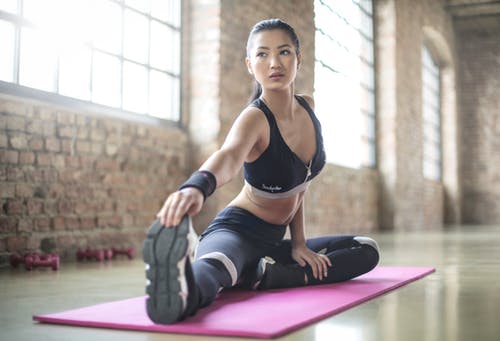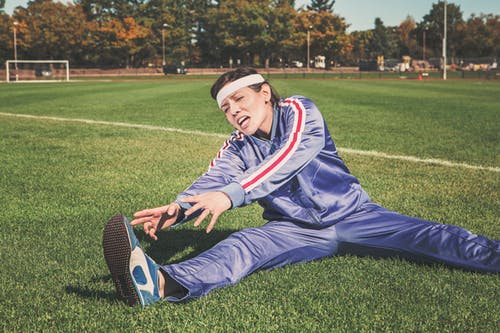Do we need to stretch before working out?

Yes. Flexibility of our muscles determines the mobility of our joints in our body. Exercises that improves our flexibility helps to improve our range of motion in our joints, reducing the chance of getting injuries when we do sports. There are a few ways to improve muscle flexibility. You can do various types of stretching exercises (static, active, dynamic, PNF, foam rolling), which will be discussed further.
However, we always skip these exercises in our workout due to a few reasons. We are all guilty of this. It could be running short of time, focusing too much on improving strength and performance or just simply lazy to do it.
“Doing stretching exercises does not hinder muscle growth or strength.”
Having a certain degree of joint flexibility is very important for anyone as we grow older. It should be part of our fitness training program. Flexible muscles performs a lot better than stiff muscles and its an indicator of tendon and ligament health too.
“Lack of flexibility is the main contributor of poor posture, muscle imbalance and joint dysfunctions.” according to NASM, National Academy of Sports Medicine.
Types of flexibility exercises: Static, Dynamic and PNF.

What type of stretching is right for you? Fitness experts offer tons of various methods, with various claims on which is the best.
Jensen, senior wellness coach from PT works says: “ There is no one method that applies to everyone. Choose one or a few that you feel good with and stick to it.”
Static stretching:
Allowing your joints to move through a certain range of motion without any motion or movement. Holding a muscle stretch at a maximum range with the help of an external force. Eg, Standing quadriceps stretch. Hold for 10 to 30 sec.
Dynamic stretching:
Using power and speed to extend your joints through big a range of motion, in a controlled manner. This method uses momentum to produce the desired range. Eg, Golf swing movement. These motion type method is good for sports athletes that involve running and sprinting.
Proprioceptive Neuromuscular Facilitation (PNF):

It is a therapeutic technique used by most personal trainers and sports coaches. You need a partner to perform PNF. Ask the partner to hold the stretch at a point of slight discomfort ( Do not use too much force!)
Slowly contract your muscles isometrically and push against the direction of the force for 10 sec. Relax your muscle and allow your partner to push it further to a greater ROM and hold for about 20 sec.
Repeat the whole process.
Caution: PNF can cause injuries if done incorrectly. Avoid using on patients recovering from acute injuries and surgery. Careful when applying on young teenagers too.
Kindly consult us if you want to learn more about PNF.
How to improve our flexibility?

There are several ways to do it. But the most important thing is to have patience because being flexible does not happen overnight.
- Start off with some light static stretches after your warm up.
- Dynamic stretching can also be done during warm up.
- Stretch your targeted muscles which you are working on.
- Have a good habit of stretching in between sets.
- It can also be done at any time of the day, take a few minutes break from your desk and start doing.
- Avoid over training. Give your body adequate rest.
- Always foam roll your muscles after each workout.
- Use a trigger ball (tennis ball, golf ball, peanut ball) to release muscle tension and knots.
- Regular sports massage.
Advantages of having good muscle flexibility.
- Increase muscle length, reducing joint stress.
- Increase Range Of Motion (ROM) of joints.
- Reduce muscle tension / stiffness.
- Helps to rectify muscle imbalance.
- Reduce tendons and ligaments stress.
- Improves neuromuscular activity and ability to activate muscle.
- Improves body functionality.
- Prevents injury.
- Improves posture and ergonomics.
- Reduce muscle spasm.
Stretching helps to reduce muscle stiffness and joint pain.

Having stiff and tight muscles are unhealthy in the long run. Especially if you are a sportsman or a regular gym goer. Our muscle fibre length gets shorter from over-use, leading to muscle knots.
A resting muscle doesn’t mean that it is in a “relaxed” mode (in its original length). Toned muscles will remain its stiffness to a certain degree due to the way actin and myosin are bounded together (spasm).
In fact, the stronger your muscle tone, the stiffer it becomes. Over time, these short muscle fibres can lead to muscular imbalances, improper muscle activation, stiff tendons and ligaments, joint dysfunction and poor neuromuscular activation to its antagonist muscle.
Its a vicious injury cycle.
An over-used muscle disrupts the kinetic chain in our body. Injured muscle > inflammation > healing > adhesions > scar tissues > reduced muscle activity > muscle imbalance > injury accumulation > repeat.
Scar tissues and adhesions causes joints to become “frozen”. Solve the root of the problem by breaking down the knots to promote mobility of the joints.
How to determine whether you are flexible? Are there any standard mobility guidelines?
There is no standard “rule” on how flexible you should be. It is relative. It all lies down on how you feel in regards to being stiff and tight. If muscle tightness affects your daily life and starts giving you trouble, most probably you are inflexible.

Being able to touch your toes does not mean that you are flexible. It could be other muscles compensating or helping you to reach the toes. Muscular strength plays a part in the range of motion too. Always remember, our body is made up of various muscle groups that link each other. It could be due to muscle imbalances.
Also, the person that is able to touch the toes might not be able to scratch his back due to poor shoulder mobility.
Secondly, flexibility level depends on what sports you do. We can’t expect a bodybuilder or a rugby player to be as flexible as a gymnast right? Some sports do not require you to be so flexible. In fact, being “too flexible” would cause more harm than good.
Can over-stretching cause any problems ?

The answer is yes. Our muscular system is made up of muscle fibres and connective tissues. Connective tissues are mainly tendons and ligaments. Excessive stretching with force (usually bouncing / jerking) can damage the connective tissues.
Do not overstretch!
Some sports doctors claimed that too much pulling force strains the tendons and ligaments, instead of lengthening the muscle belly itself. This might lead to joint hyper-mobility (loose joints).
Interestingly, some sports physiologists say that stretching is a waste of time.
Ex-president of CASM (Canadian Academy of Sports Medicine), Dr Ian Shrier, explained: “Sports injuries always happen when muscles are strained within a normal range of motion (ROM) when contacted. Therefore why would improved muscle length help to prevent injuries?”
He also concluded that proper warm up is much more important in injury prevention. Some light dynamic flexibility drills can be included to lubricate our joints and promote blood flow.
However, further studies need to be done in order to confirm his claim.
Stretching after workout does not prevent muscle soreness.
Recent years, more than 300 studies were done to prove that stretching does not help to prevent muscle soreness, according to ACSM reviews.
The fitness industry has made us perceive that soreness can be reduced by stretching. The fact is, muscle soreness (DOMS) is caused by the microscopic damage / strain in the muscle fibres after an intense training, but often mistaken as lactic acid build up. Only rest can get rid of soreness (usually 48hours).
We can customise a complete stretch program for you!
Having done lots of research and treated many clients, we recommend everyone to stretch regularly, starting from basics.
Start targeting the major muscle groups first – pectorals, lats, shoulders, neck, abdominals, hip flexors, gluteus, hamstrings and calves.
For most people, muscles are usually more tight on one side (imbalance). Spend a bit more time on those stiffer areas and aim towards improving your range of motion.

